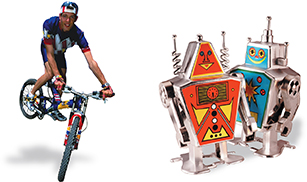Figure 5 A compressed bicycle shock absorber and a wound-up toy robot both have elastic potential energy.

Quick Lab
Investigating Elastic Potential Energy
Materials basketball, tennis ball, meter stick
Procedure 
Drop the basketball from a height of 1 m. Use a meter stick to measure how high it bounces. Record your result.
Repeat Step 1 with the tennis ball.
Place the tennis ball on top of the basketball and drop both together from a height of 1 m. Record your observations.
Analyze and Conclude
Observing How high did the tennis ball bounce in Steps 2 and 3?
Applying Concepts From your observations of Step 2, how can you prove that the kinetic energy of the tennis ball just after a bounce is less than it was just before the bounce?
Drawing Conclusions Use the concepts of kinetic and potential energy to explain your observations of the tennis ball in Step 3.
Elastic Potential Energy
The potential energy of an object that is stretched or compressed is known as elastic potential energy. Something is said to be elastic if it springs back to its original shape after it is stretched or compressed. Think back to the last time you stretched a rubber band between your fingers. By stretching the rubber band, you did work on it. Just like the musician did with her cello string, the energy you added was stored in the rubber band as potential energy. If you've ever broken a stretched rubber band, you may have felt a painful snap on your hand. The rubber band's elastic potential energy was converted into kinetic energy.
Elastic potential energy can also be stored in objects that are compressed, such as springs. Drop a slice of bread on the floor and it does not bounce noticeably. Why doesn't it? The bread is not very elastic. Drop a basketball on the floor and the basketball bounces back up. The compressed air in the ball forces the ball to spring back into shape after hitting the ground, propelling the ball back up. Other examples of elastic potential energy are shown in Figure 5.
Forms of Energy
All energy can be considered to be kinetic energy, potential energy, or the energy in fields such as those produced by electromagnetic waves. Some familiar examples are the chemical energy in fireworks, electrical energy in lightning bolts, and nuclear energy within the sun.  The major forms of energy are mechanical energy, thermal energy, chemical energy, electrical energy, electromagnetic energy, and nuclear energy. Each of these forms of energy can be converted into other forms of energy.
The major forms of energy are mechanical energy, thermal energy, chemical energy, electrical energy, electromagnetic energy, and nuclear energy. Each of these forms of energy can be converted into other forms of energy.
Mechanical Energy
The energy associated with the motion and position of everyday objects is mechanical energy. Don't be confused by the name, however. Mechanical energy is not limited to machines. Mechanical energy is the sum of an object's potential energy and kinetic energy. Speeding trains, bouncing balls, and sprinting athletes all have mechanical energy.




